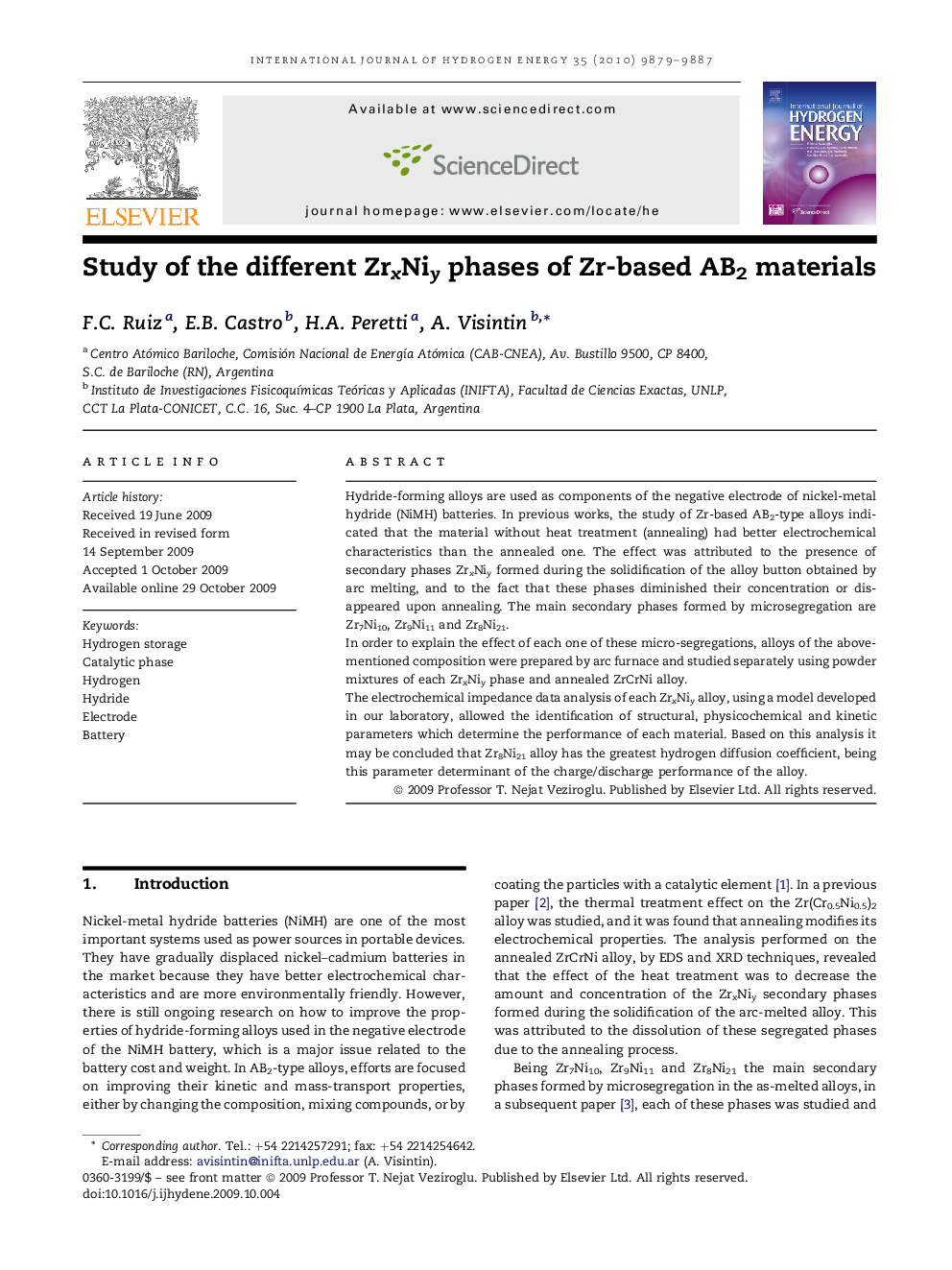| Article ID | Journal | Published Year | Pages | File Type |
|---|---|---|---|---|
| 1280284 | International Journal of Hydrogen Energy | 2010 | 9 Pages |
Hydride-forming alloys are used as components of the negative electrode of nickel-metal hydride (NiMH) batteries. In previous works, the study of Zr-based AB2-type alloys indicated that the material without heat treatment (annealing) had better electrochemical characteristics than the annealed one. The effect was attributed to the presence of secondary phases ZrxNiy formed during the solidification of the alloy button obtained by arc melting, and to the fact that these phases diminished their concentration or disappeared upon annealing. The main secondary phases formed by microsegregation are Zr7Ni10, Zr9Ni11 and Zr8Ni21.In order to explain the effect of each one of these micro-segregations, alloys of the above-mentioned composition were prepared by arc furnace and studied separately using powder mixtures of each ZrxNiy phase and annealed ZrCrNi alloy.The electrochemical impedance data analysis of each ZrxNiy alloy, using a model developed in our laboratory, allowed the identification of structural, physicochemical and kinetic parameters which determine the performance of each material. Based on this analysis it may be concluded that Zr8Ni21 alloy has the greatest hydrogen diffusion coefficient, being this parameter determinant of the charge/discharge performance of the alloy.
